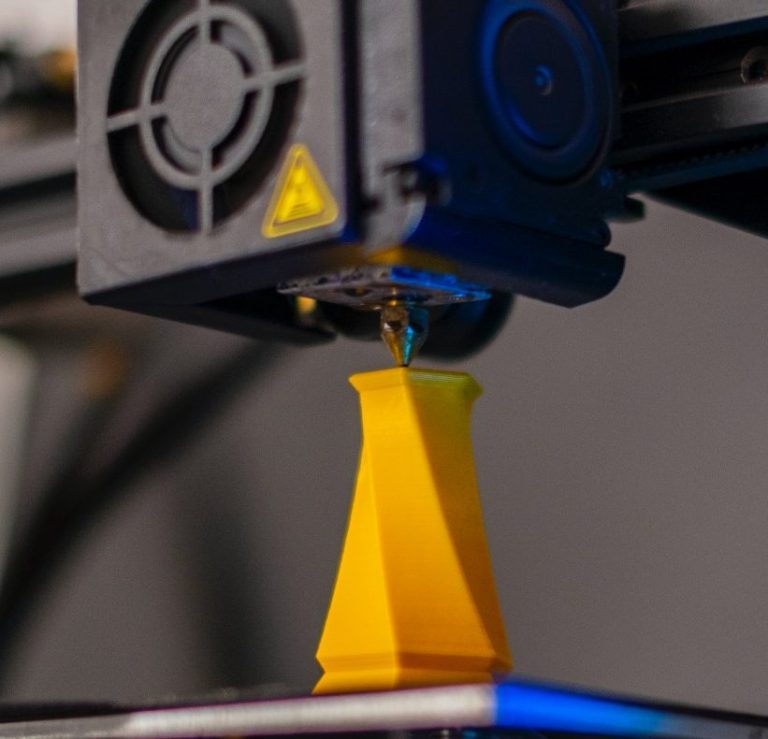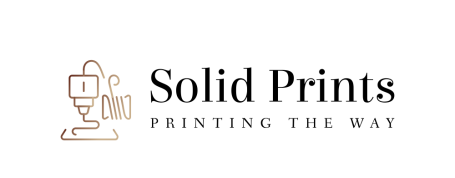Guide To 3D Printing

Brief History of 3D Printing
3D printing also known as additive manufacturing, was created in the 1980s by Dr. Hideo Kodama for producing rapid prototyping system. This was achieved by creating parts layer by layer, using resin that could be polymerized by UV light. Chuck Hull filed the first patent for stereolithography in 1986 and is classed as the "inventor of 3D printing" for creating the SLA process and the .stl file format that is most commonly used in 3D printing.
What is 3D printing?
3D Printing is a process for making a physical object from a three-dimensional digital model, typically by laying down many successive thin layers of a material. It brings a digital object (its CAD representation) into its physical form by adding layer by layer of materials.
There are several different techniques to 3D Print an object. We will go in further details later in the Guide. 3D Printing brings two fundamental innovations: the manipulation of objects in their digital format and the manufacturing of new shapes by addition of material.
Digital
+
Additive Manufacturing

How it Works
The different types of 3D printers each employ a different technology that processes different materials in different ways. It is important to understand that one of the most basic limitations of 3D printing — in terms of materials and applications — is that there is no ‘one solution fits all’. For example some 3D printers process powdered materials (nylon, plastic, ceramic, metal), which utilize a light/heat source to sinter/melt/fuse layers of the powder together in the defined shape. Others process polymer resin materials and again utilize a light/laser to solidify the resin in ultra thin layers. Jetting of fine droplets is another 3D printing process, reminiscent of 2D inkjet printing, but with superior materials to ink and a binder to fix the layers. Perhaps the most common and easily recognized process is deposition, and this is the process employed by the majority of entry-level 3D printers. This process extrudes plastics, commonly PLA or ABS, in filament form through a heated extruder to form layers and create the predetermined shape.
Because parts can be printed directly, it is possible to produce very detailed and intricate objects, often with functionality built in and negating the need for assembly.
However, another important point to stress is that none of the 3D printing processes come as plug and play options as of today. There are many steps prior to pressing print and more once the part comes off the printer — these are often overlooked. Apart from the realities of designing for 3D printing, which can be demanding, file preparation and conversion can also prove time-consuming and complicated, particularly for parts that demand intricate supports during the build process. However there are continual updates and upgrades of software for these functions and the situation is improving.

The Fused Deposition Process
3D printing utilizing the extrusion of thermoplastic material is easily the most commonly used form of 3D printing, as it's the process we use here at Solid Prints this is the process we will focus on.
The most popular name for the process is Fused Deposition Modelling (FDM), due to its longevity, however this is a trade name, registered by Stratasys, the company that originally developed it. Stratasys’ FDM technology has been around since the early 1990’s and today is an industrial grade 3D printing process.
The process works by melting plastic filament that is deposited, via a heated extruder, a layer at a time, onto a build platform according to the 3D data supplied to the printer. Each layer hardens as it is deposited and bonds to the previous layer.
A range of proprietary industrial grade materials for the FDM process that are suitable for some production applications. At the entry-level end of the market, materials are more limited, but the range is growing. The most common materials for entry-level 3D printers are ABS and PLA.
The FDM processes require support structures for any applications with overhanging geometries. For FDM, this entails a second, water-soluble material, which allows support structures to be relatively easily washed away, once the print is complete. Alternatively, breakaway support materials are also possible, which can be removed by manually snapping them off the part.
In terms of models produced, the FDM process from is an accurate and reliable process that is relatively office/studio-friendly, although extensive post-processing can be required.

The Resin Printing Process
Resin printers work similarly to FDM models in the sense that they build material layer by layer — that's where the similarities end, though. Resin printers make use of light-sensitive resin — usually as a liquid in a bath or tank, but there are printers that apply the resin layer-by-layer with a roller or a jet — and a light source to cure the resin. The type of light source can differ, as well.
Stereolithography (SLA) uses a directed UV laser to cure one spot at a time and trace out a layer before moving on to the next layer, while digital light processing (DLP) and liquid crystal display (LCD) printers use projectors and mirrors or an LCD mask and light source to cure an entire layer at a time before advancing to the next layer. Regardless of which type of resin printer you use, the printer creates one very thin layer at a time, then moves the piece vertically before starting on the next layer. In most cases, once the print is complete, the piece needs to undergo additional curing, either by exposure to UV light or moderate heat.
Resin printing — particularly SLA — is one of the oldest and most mature 3D printing technologies around, which means the process is quite refined by this point. This gives resin printers a few key advantages over their FDM competition. The most important advantage of resin printers is their high resolution and detail. Because resin printers use light to cure a bath of resin, they can produce incredibly detailed parts in comparison to an FDM printer.
A prime example is the 0.1-millimeter for FDM where as resin can achive (0.01 millimeter) accuracy, the resin printer is around 10 times as accurate as a similarly-priced FDM model from the same company. Along with increased accuracy, DLP and LCD printers have a slight speed advantage over FDM printers because they can cure a whole layer at once instead of tracing it with an extruder head — though resin printers lose a little bit of the advantage because prints need to be rinsed and cured after the printing.
In a similar vein, supports are another big advantage for FDM printers. Because part of the weight of the printed object is suspended by the liquid resin, supports don't need to be nearly as strong as they do with FDM printers. What's more, you usually don't need as many supports when printing with resin. Fewer, thinner supports mean that parts printed in resin are much easier to clean than FDM printers. Resin printers don't come without their disadvantages, though.
3D Printing Benefits and Value
3D printing, whether at an industrial, local or personal level, brings a host of benefits that traditional methods of manufacture (or prototyping) simply cannot.
Customisation
3D printing processes allow for mass customisation — the ability to personalize products according to individual needs and requirements. Even within the same build chamber, the nature of 3D printing means that numerous products can be manufactured at the same time according to the end-users requirements at no additional process cost.
Complexity
The advent of 3D printing has seen a proliferation of products (designed in digital environments), which involve levels of complexity that simply could not be produced physically in any other way. While this advantage has been taken up by designers and artists to impressive visual effect, it has also made a significant impact on industrial applications, whereby applications are being developed to materialize complex components that are proving to be both lighter and stronger than their predecessors. Notable uses are emerging in the aerospace sector where these issues are of primary importance.
Tool-less
For industrial manufacturing, one of the most cost-, time- and labour-intensive stages of the product development process is the production of the tools. For low to medium volume applications, industrial 3D printing — or additive manufacturing — can eliminate the need for tool production and, therefore, the costs, lead times and labour associated with it. This is an extremely attractive proposition, that an increasing number or manufacturers are taking advantage of. Furthermore, because of the complexity advantages stated above, products and components can be designed specifically to avoid assembly requirements with intricate geometry and complex features further eliminating the labour and costs associated with assembly processes.
Sustainable / Environmentally Friendly
3D printing is also emerging as an energy-efficient technology that can provide environmental efficiencies in terms of both the manufacturing process itself, utilising up to 90% of standard materials, and, therefore, creating less waste, but also throughout an additively manufactured product’s operating life, by way of lighter and stronger design that imposes a reduced carbon footprint compared with traditionally manufactured products.
Furthermore, 3D printing is showing great promise in terms of fulfilling a local manufacturing model, whereby products are produced on demand in the place where they are needed — eliminating huge inventories and unsustainable logistics for shipping high volumes of products around the world.
© Copyright. All rights reserved.
We need your consent to load the translations
We use a third-party service to translate the website content that may collect data about your activity. Please review the details in the privacy policy and accept the service to view the translations.
